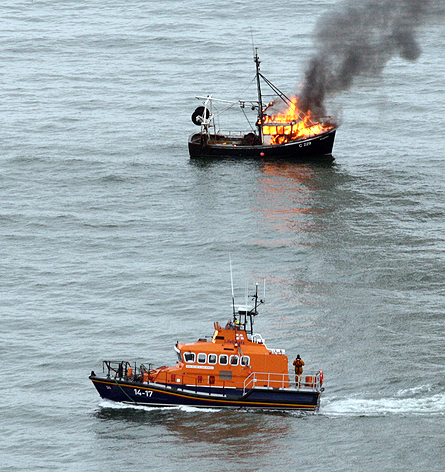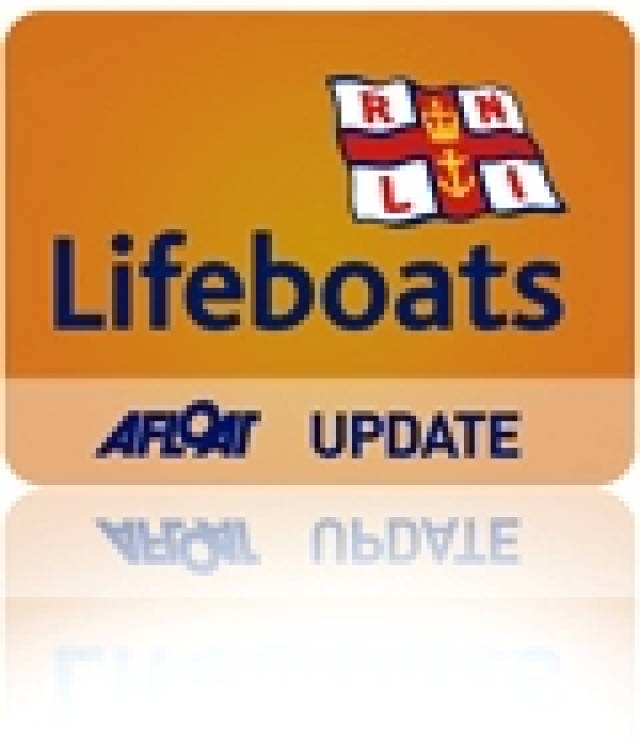#rnli – The lifeboat crew with Dunmore East RNLI responded to a callout yesterday to a vessel on fire four miles south of Hook Head in County Waterford. The fishing vessel Kingfisher, with two crew onboard, issued a Mayday after a fire broke out at around 7.30am.
The two men managed to evacuate their vessel and board their liferaft before being rescued by a nearby vessel. Along with the Dunmore East lifeboat, the Irish Coast Guard helicopter Rescue 117 and a number of fishing vessels in the area also responded to the call for help.
On arrival at the scene the lifeboat established that all crew were safe and made sure that no one would approach the vessel, which was on fire. From a safe distance the lifeboat crew tried to cool the fire but as it spread through the vessel they retreated. The lifeboat stood by until it was released from the scene at 10.30am. After the fire burned itself out the vessel sank.
The two men were shaken but unharmed after their ordeal.

Photographs by kind permission of Irish Coast Guard/Neville Murphy feature the Dunmore East RNLI lifeboat on scence with the Kingfisher
Commenting on the callout Dunmore East Lifeboat Operations Manager Ciaran Mullins said, “ The two fishermen were very lucky. They did everything right from evacuating their vessel when the fire took hold to issuing a Mayday. We are fortunate in Dunmore East to have a great community of fishing vessels who are ready to come to the aid of anyone in distress. That along with the RNLI and Coast Guard crews means that help can reach a casualty quickly when every second counts.”
































































